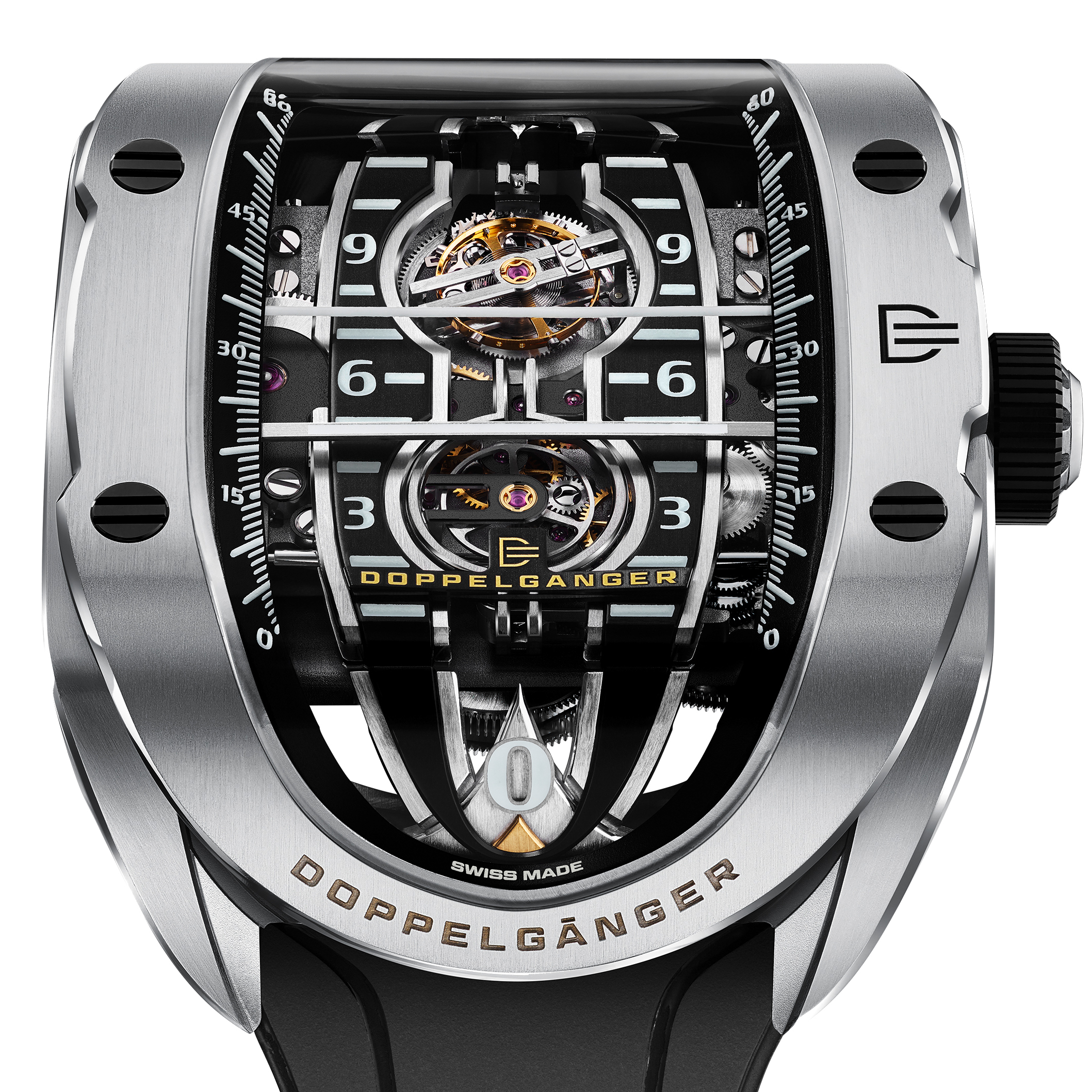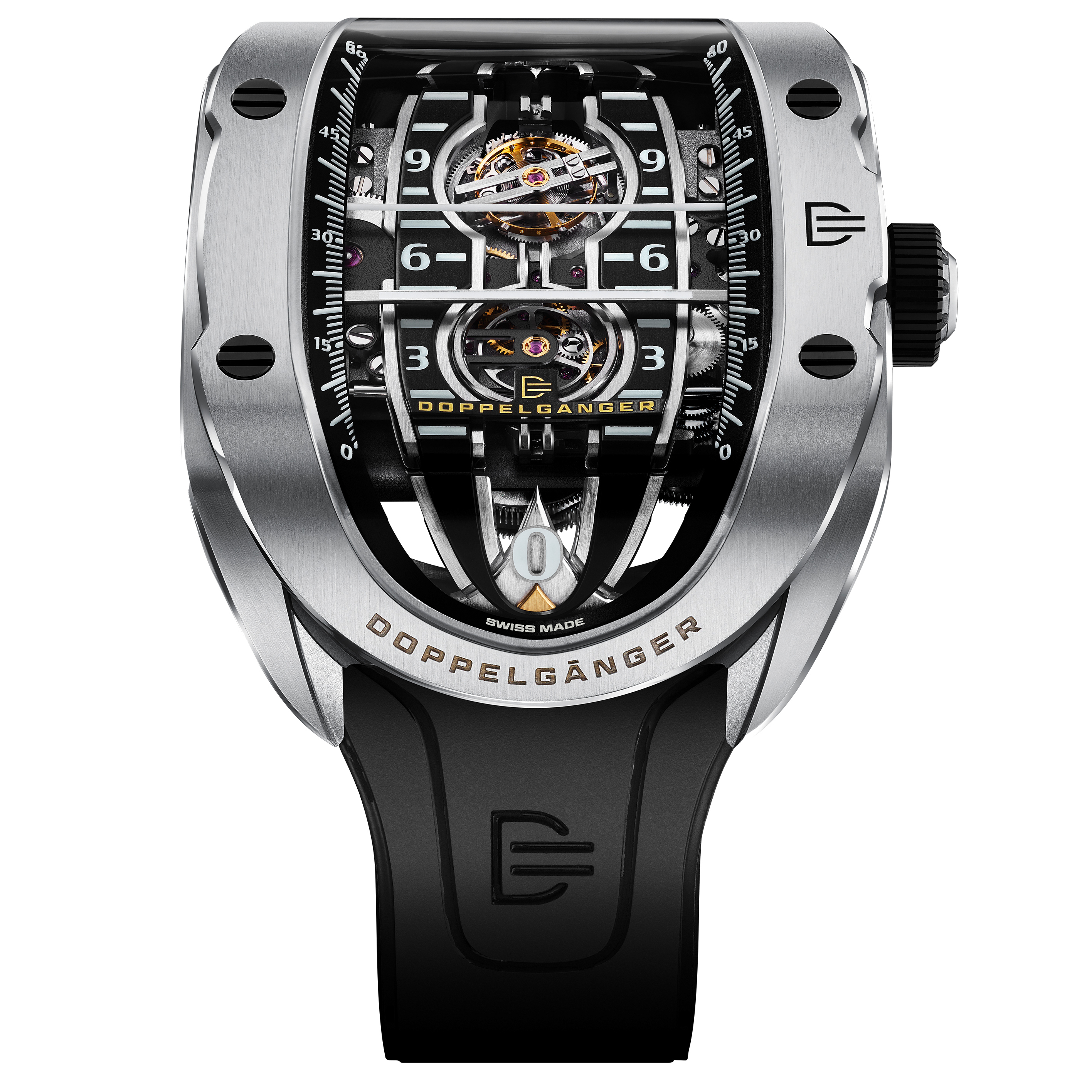
NGC-42
Power reserve: 100 h, 21600 vph
Skeleton movement
Operating from Salzburg/Austria, DOPPELGÄNGER stands for extraordinary ideas, for new approaches to the engineering of watches and for traditional Swiss handmade watchmaking.
The first model is the NGC-42:
Double Orbital Indicators display the hours and the minutes on a non-linear scale. Controlled by a flying Tourbillon and a Random Impulse Controller, the Double Orbital Indicators move like celestial bodies and orbit a central dial unit in a three-dimensional ecliptic. The NGC-42 takes its name from New General Catalogue of Nebulae and Clusters of Stars (NGC) which was started in the 1880ies, is largely based on Wilhelm Herschel's observations of the skies and is still the standard work today. It represents DOPPELGÄNGER'S idea of uniting past, present and future.
From the base up, the NGC-42 consists of three units: The Base Unit with four of the five main spring barrels; the Core Unit containing the movement with the flying Tourbillon and a specific Random Impulse Controller and the Indication Unit with the micro-belt drive, the Orbital Indicators and the hour scales.
The tree units of the NGC-42 in detail from case back to crystal:
• The Base Unit contains four of the five large main spring barrels of the NGC-42: Three barrels are driving the Indication Unit. The fourth barrel drives the Tourbillon, together with the fifth barrel in the Core Unit. This ample power supply provides a reserve of 100 hours.
• The Core Unit houses the movement of the NGC-42 and the winding and time setting mechanism. Prominently visible are the Tourbillon and the Random Impulse Controller:
Tourbillon
The one-minute Tourbillon of the NGC-42 is a flying Tourbillon protected by two Incabloc® shock absorbers. It is made of 53 parts and the whole cage including the balance still weighs 0.47 grams. Its extra-flat construction has of a total height of only 4mm. The flying Tourbillon acts as the time generator.
Random Impulse Controller
The Random Impulse Controller takes the precise time through a movable gear wheel from the Tourbillon. When this gear wheel has moved to the end of its sector, it releases power from the mainsprings and allows the Orbital Indicators to move forward, until it swings back. The Random Impulse Controller in this way allows the Indication Unit to catch up with the Tourbillon, but never to outpace it. How long this process takes depends on the position of the Indicators and the energy stored in the mainsprings. Consequently, the Orbital Indicators move at different intervals, but still keep precise time. This creates the fascinating effect that the exact time is produced by an irregular and seemingly random process.
The Random Impulse Controller is a unique construction, a mechanism exclusive to the NGC-42.
• The Indication Unit above the Core Unit contains the micro belt drive with its four stainless steel micro-belts on which the two pairs of Double Orbital Indicators are mounted and the mechanism for driving and tensioning the micro belts with its gear wheels and bearings. The central hour scales are mounted on the Indication Unit, below the Double Orbital Indicators. By contrast, the two scales for the minutes above the Double Orbital Indicators are part of the réhaut. The Orbital Indicators and the hour and minute scales are coated with Swiss Super-LumiNova®. Details of the bridges are made of Swiss Super-LumiNova® Lumicast® elements.
The Exosphere Case protects all three units with its spacecraft inspired design by Gerold Rubenbauer, one of the founders of DOPPELGÄNGER and a designer who worked on futuristic spacecraft designs for animation movies. The crystal is a particularly complex curved design which allows a full view of the rising and setting Double Orbital Indicators at their event horizons. At this moment, for a short time, the two Double Orbital Indicators for the hours or the minutes are both visible at the same time, thanks to a patented invention by Heinz Fladl, another founder of DOPPELGÄNGER.


